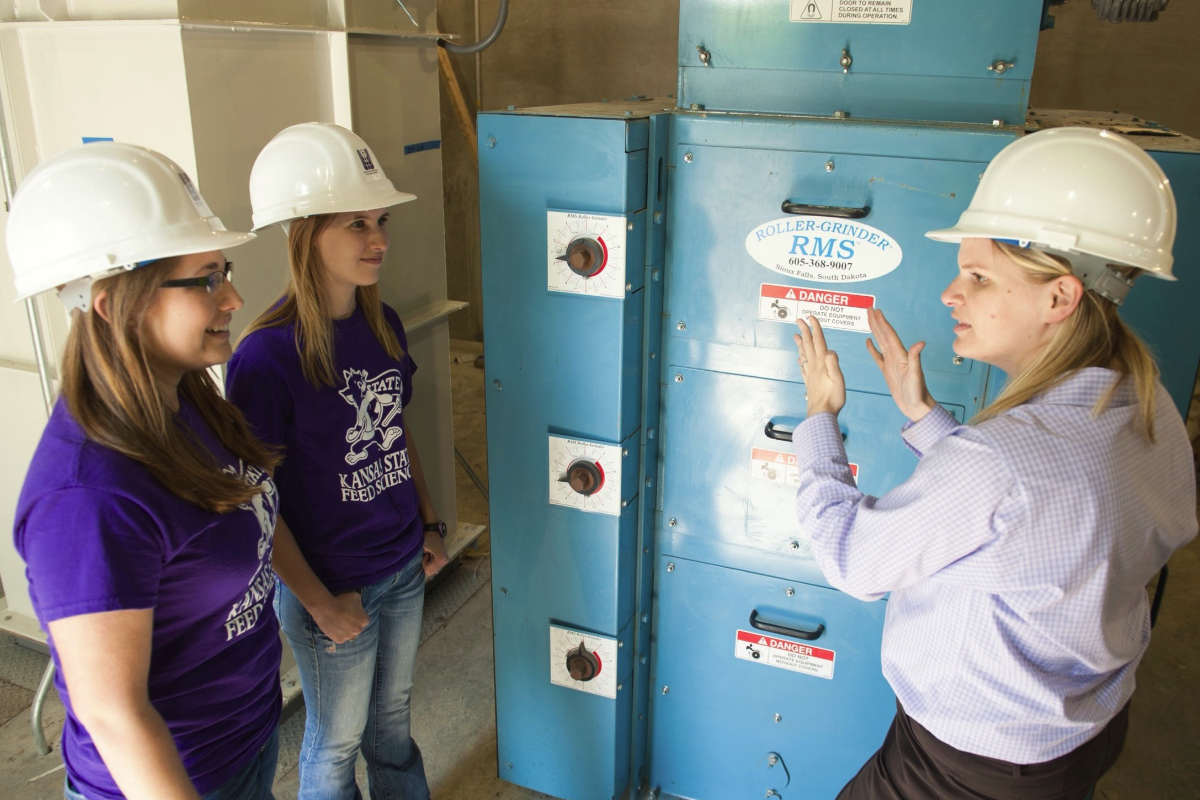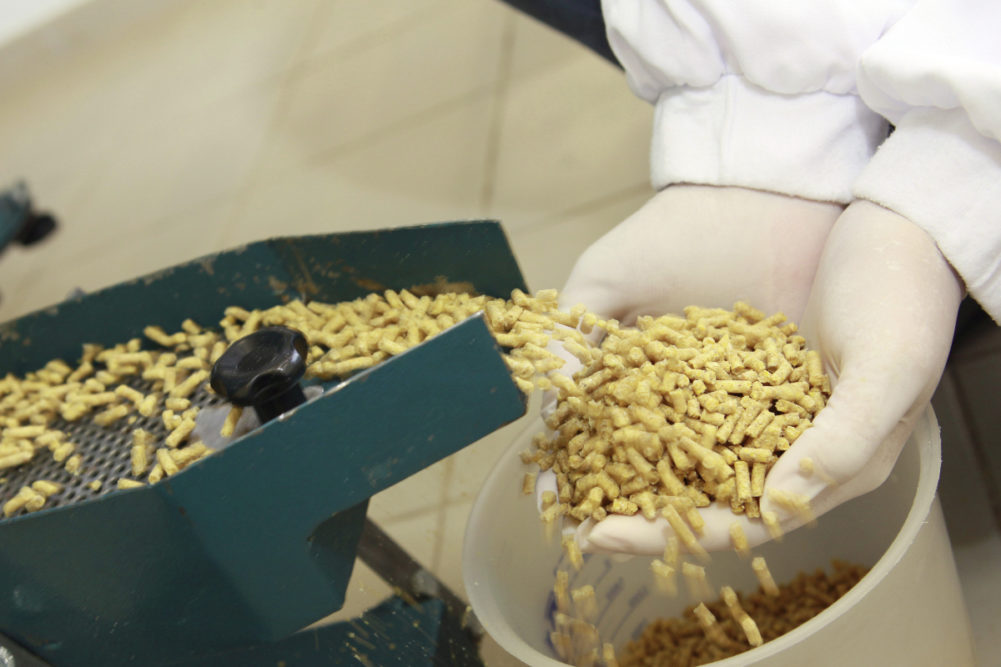KANSAS CITY, MISSOURI, US — Biosecurity in feed mills has become an important part of the feed processing and manufacturing industry but it is even more important to continue to reevaluate and assess possible biosecurity risks.
Whether a mill already has a biosecurity plan in place or is looking to establish one, the first step is to assess the risk. The goal of the assessment is to prevent pathogen contamination in feed, ingredients and transportation.
“The first step in protecting a mill is to understand the risk the feed carries and potential pathogens that can be carried in feed,” Roger Cochrane, director of Feed Mills for Pipestone’s nutrition team, said. “To me that is step one, to know what’s of concern. From there the overall goal in a feed mill is to prevent entry of a pathogen. Once that pathogen enters the feed mill, it is extremely difficult to get it out just from the standpoint of all the different surfaces, conveyors the dust moving through those facilities. When you start to build biosecurity plans, always have prevention in mind as the first stop.”
In his role at Pipestone, Cochrane audits feed mills to help facilities ensure biosecurity efforts are being utilized to their full potential. Every mill is different, from ingredient sourcing, transportation to processing and more, he said, so a biosecurity plan is always very specific to the feed mill.
“Once you identify processes and hazards and determine what your biggest area of concern is, the next step is to implement those procedures,” Cochrane said, “Again, that could be different across every single feed mill, the concepts are the same but the actual feed mill procedure can differ.”
Key concerns
The goal of these plans is to create obstacles or barriers to prevent pathogens from getting into the mouth of an animal.
There are plenty of risks and factors to consider, but the receiving area, people movement or foot traffic and ingredient sourcing are key.

“When you think of feed mill biosecurity one of the first things that pops out to me is always the receiving area. Another would be foot traffic and trying to figure out a way to limit movement of employees all the way through the feed mill to prevent pathogens from moving around on employees’ shoes,” Cochrane said.
The receiving area is where Cochrane often sees facility operators make mistakes and is one area that he focuses on when auditing a mill. Common mistakes include not using pit covers correctly or sweeping ingredients into the pit as it is touching the floor.
“One thing I really look for when I go in is making sure they are using the pit cover correctly. Basically, the cover is over the pit, the truck drives into the receiving area and they remove the cover. Then they unload the truck, and then before that truck drives off, they put that cover back across. A lot of the time that seems to be the one thing that gets forgotten is to cover that pit back up before that truck drives through,” he said. “So, if you don’t put the cover back on, you kind of defeat the purpose of having that pit cover in place as protection from that truck.”
Another common issue Cochrane observes in the receiving area is sweeping ingredients into the pit. Sometimes ingredients will pile up on some pits if it is not big enough and mill employees will sweep them into the pit to prevent waste. In this type of situation, Cochrane suggests using a receiving box or cone which outlines those pits to prevent that product from overflowing. It allows them to use more of that product without having to discard it if it touches the floor.
Another area of concern is people moving around and within the mill. Addressing the method of arrival is a factor in determining the impact it can have on not only the feed, but also the entire facility, said Cassie Jones, associate professor in the department of animal science and industry at Kansas State University.
Jones is an associate professor in the Department of Animal Sciences & Industry at KSU. Her research efforts include evaluating the effects of ingredients or feed processing technologies on feed safety and animal nutrition.
“If it came in on an ingredient, then obviously it can get into the feed pretty easily,” said Jones. “If it came in on somebody’s shoe or on a vehicle’s tire, then there may be some things that we can do to prevent it from entering the feed system altogether. For example, if we have segregated footwear that we can wear that are just for employees within the mill or maybe we are preparing pits where tires cannot drive across them. Those are all considered sources of potential risk and biological hazards entering into feed mills.
“Those types of things could mean that we may have a transient hazard that is kind of moving through the mill, but it does not necessarily become established within the mill itself. But we do know that, unfortunately, if that pathogen does become established in the mill and makes its way into the feed manufacturing system, then it can spread throughout the entire mill very easily.”
High-risk ingredients
When thinking about preventing foreign animal diseases, Jones also focuses on ingredient sourcing. She suggests excluding high-risk ingredients, including grains and oilseeds from regions with foreign animal disease such as African swine fever (ASF or ASFV).
“As we consider foreign animal diseases, certainly we prioritize where ingredients are from geographically, and so we understand that there can be more risk from ingredients that are maybe grown in areas that have the African swine fever virus,” Jones said. “Trying to understand some of those aspects and assess the risk that could come with the ingredient itself.”
According to the United States Department of Agriculture (USDA), ASF is a contagious and deadly viral disease affecting domestic and wild pigs of all ages. ASF is not a threat to human health and cannot be transmitted from pigs to humans. It is not a food safety issue.
ASF is found in countries around the world and has recently spread through India, China, Mongolia and Vietnam, as well as within parts of the European Union. It has not been found in the US.

“For me, high risk ingredients fall into different categories,” Jones said “There are ingredients that have potential to be contaminated with virus, which in today’s time would be a bulk ingredient that I could be bringing in from an ASFV-endemic country.
“If I were to have the ability to exclude bulk ingredients from ASFV-endemic countries, that’s typically my first choice. Then I start looking at the minor use ingredients: the vitamins and minerals, enzymes that are much more difficult to procure from non-ASFV endemic countries,” Jones said. “In many cases, we can economically procure some of those, but they may be more expensive in North America or from European vendors. Some of those same European vendors may have ASFV within their countries but not necessarily in the domesticated population. She added that “just because ingredients are from an ASFV-endemic country, that does not necessarily mean that they are unsafe.”
There are checks and balance that can be taken into consideration to determine whether an ingredient is safe.
“I think if it’s produced in a laboratory-type environment that has biosecurity around it, like most of the vitamin or amino acids would be in some of those ASFV-endemic countries, and as long as it’s packaged on site and shipped into the United States in the original sealed bags, then I don’t consider that to be as high risk,” Jones said. “But if a product arrives to me from an unknown origin or its origin is from ASFV-endemic country, and particularly if it’s in bulk without knowledge of sanitary transportation, I’m quite a bit more suspicious about it.”
When procuring feed ingredients, Cochrane suggests feed millers ask what quarantine procedures suppliers have in place for the products.
“Most of the time quarantine procedures and holding times are not going to take place at the feed mill,” Cochrane said. “It’s actually going to happen at the suppliers warehouse area. We always encourage them to reach out to their suppliers so that they are aware of exactly how that product is being handled before being utilized by the feed mill.”
Although Pipestone does not have mills of its own, the company helps procure ingredients for some of the toll mills.
Pipestone is committed to a responsible importing process with “a means to safely introduce products from countries of high risk using a science-based approach,” motto.
“We actually require the supplier of the products we procure to hold product in their specific quarantine area,” Cochrane said. “So, that product enters that quarantine room before it actually enters the warehouse and holding area in which during quarantine the product is held for 35 days at 60 degrees Fahrenheit before it is introduced into the warehouse.”
Although ASF has been a trending concern with the swine and feed industry, Cochrane said a lot of biosecurity procedures are a crossover to prevent entry of any type of pathogen.
Removing pathogens
Once a pathogen enters a feed mill, it is extremely difficult, and costly, to remove. KSU researchers learned this firsthand after purposely infecting a batch of feed at its Cargill Feed Safety Research Center with PEDV.
According to the American Association of Swine Veterinarians, PEDV or Porcine Epidemic Diarrhea Virus is a virus that causes severe diarrhea and dehydration in swine or pigs. Similar to ASF, PEDV does not affect pork safety, meaning it is safe to eat.

Even after running four clean batches of feed through the mill, there was significant contamination on the equipment from the purposeful PEDV infection. Additionally, there was contamination on equipment within one meter of manufacturing and on surfaces more than three meters away.
Equipment had to be broken down, power washed, sanitized and eventually the mill was heated to 140 degrees for 48 hours.
“It’s not a process that is practical in the industry and that’s why we really focus on prevention,” Jones said. “Our options if a pathogen moves into feed mills are not pretty, they are not inexpensive and are not very easy, and so there is quite a bit of reward if we can continue to focus on prevention because once we get into feed mill mitigation it’s a whole other ball game of expense and impracticality.”
A downfall of feed mill biosecurity is the inability to guarantee complete success of no contamination.
“I think one of the things I struggle with the most in the prevention aspect is trying to help producers and feed manufacturers know and understand that there is risk in feed manufacturing in terms of virus transmission,” Jones said. “But it’s difficult to know how much risk. It is difficult to know how much effort, money and time that we should be putting in, so we don’t have this transmission occur. Some of those numbers are difficult to determine. There is not really a return on investment that you can easily calculate from a biosecurity effort or from feed mill biosecurity because I can’t really tell you what’s the probability of a pathogen coming in.”
Determining the probability of a pathogen entering a feed mill depends too much on each facility individually, including ingredient sourcing and processing.
“I would hedge my answer and say there is enough risk that I think we have demonstrated events where contaminated feed has caused swine illness in North America,” Jones said. “But there’s not enough evidence for us to build a definitive model for an economic return on investment for feed mill biosecurity and that continues to be a challenge for implementation.”






